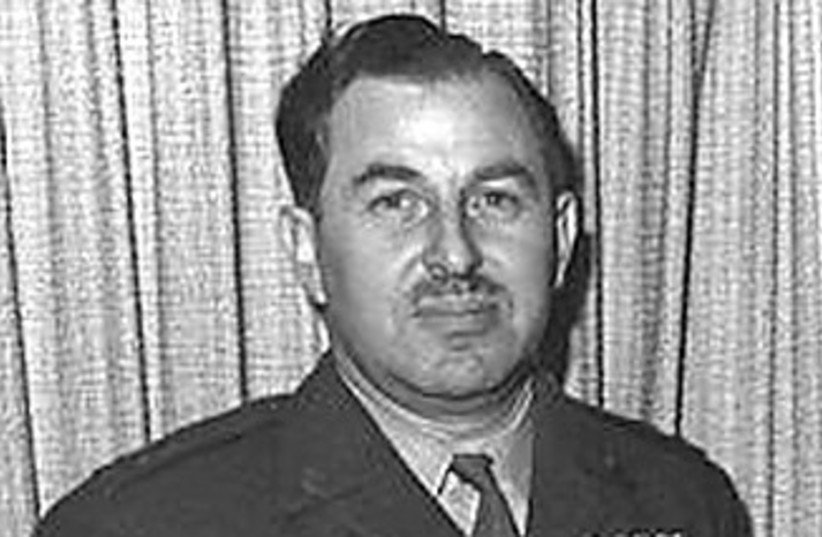Who would have thought that a museum honoring the one-and-a-half-million Jews who fought in World War II would come to be?
The Chaim Herzog Museum of the Jewish Soldier in World War II in Latrun highlights the 550,000 American Jews, another similar number from the former Soviet Union, and half a million Jews from England, South Africa, Australia, New Zealand, France, and other countries who participated in the war.
With the blessing of President Isaac Herzog, Education Minister Yoav Kisch cut the ribbon on June 8, although the museum hasn’t officially opened yet.
Twenty-two years ago, retired Israeli general Zvi Kantor decided that a museum such as this was essential. Now the crowning glory of his work, arising from his unhesitating labor, has come to be. After two decades, Kantor presents the entire Jewish world with the gift of a museum. Now all Jewish veterans of World War II have an important home for their descendants to visit. Jews from around the world are expected at the museum, Israelis in particular, governmental leaders, IDF officers, and many more groups, especially youth, teenagers, and college students.
Helping the Jews who fought in World War II be remembered in the shadow of the IDF
The fact that Jews fought in World War II has not been difficult to prove because of the existence of an enormous number of records and memorabilia. However, in the shadow of the mighty IDF, those Jews can easily come to be forgotten. Since I am the son of one of those soldiers, I can react in a way most Jews cannot. Jews once fought in all the battles in the European theater and the Pacific. Only Jewish chaplains in the armies kept them on the radar screen.

Unlike Israel’s people’s army today, where cellphones and home visits ensure that soldiers and their parents are linked, nothing like this existed during World War II. Packages could be sent and letters were written, but there was no way of being in direct contact with soldiers abroad. When the Jewish fighters – men and women – were sucked back into their homes and community, they became unimportant.
My mother was unusual. She kept a scrapbook of my father’s service in Mississippi, and then the Philippines and Japan. I looked at it constantly because I was proud of my father. Most of my friends, whose fathers and sometimes mothers served, only had discharge papers. Only a few families saved letters from children in the service. So quite quickly, Jews who served in the war lost that status.
The other problem was of a different nature. The concept that ”Jews went like sheep to the slaughter” has only in the last decades been disproven. Once the Jews in the Holocaust were known to have fought back, they were honored, as is reflected in the museum.
The memory of those who fought, and especially those who died in battle, has practically disappeared. That is why General Kantor is absolutely right in what he has created. It took so long because most people told him that this was a waste of money. They were wrong.
The state-of-the-art displays are a notch above those at most other military museums. I have followed the construction of the museum for 15 years. On my first visit, there were just a few small exhibits crowded into a small corridor. Today, the visitor can spend several hours touring the museum.
Kantor and archivist Tamar Ketko are to be praised. The exhibits are well constructed and fascinating. A museum, nevertheless, is always built with its own approach unless the creators are open to other groups, countries, and military organizations for information about other such soldiers who fought – and died.
One example is the famous American Jewish soldier in World War II David “Mickey” Marcus, an ardent Zionist. He answered David Ben-Gurion’s call for American Jewish veterans, especially officers, to come and fight in 1947 and 1948. Marcus was in the Holy Land from December 1947 until his suspicious death in June 1948. Over the heads of all officers of the pre-IDF military, Ben-Gurion made him a general.
When Marcus was killed, Ben-Gurion sent IDF chief Moshe Dayan to accompany the casket. Marcus’s remains at West Point, the home of the prestigious United States Military Academy, are those of its only Jewish graduate and officer. The Chaim Herzog Museum has a large collection on Marcus, which will be displayed to honor him.
The public will be most impressed by the recognition of soldiers from a range of countries who fought bravely in the battles of World War II. The museum also has a database of soldiers from all armies. The email address for submissions is Zvika@jwmww2.com. ■
The writer is a retired rabbi and chaplain in the US Army living in Jerusalem.
